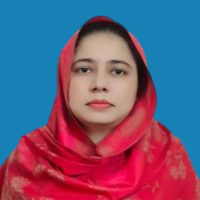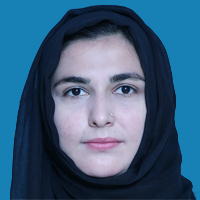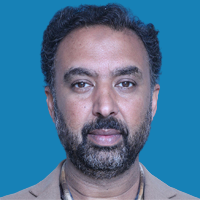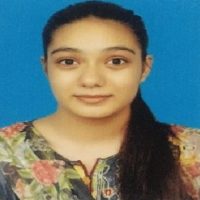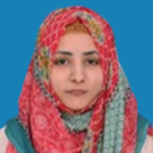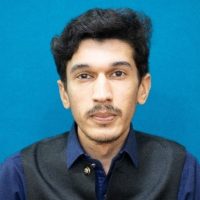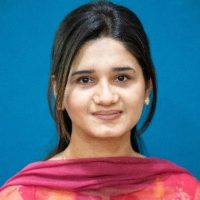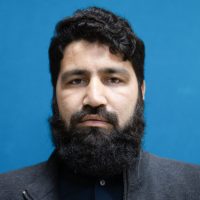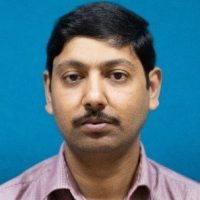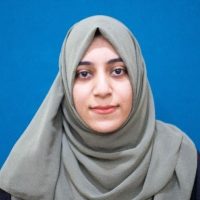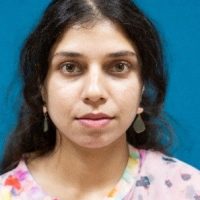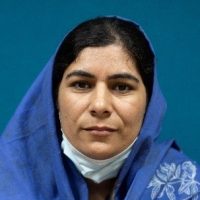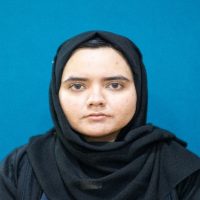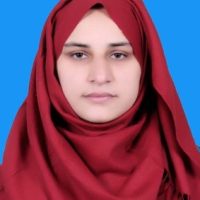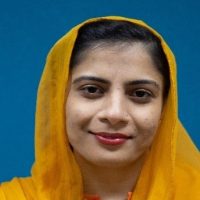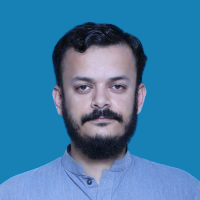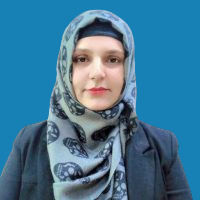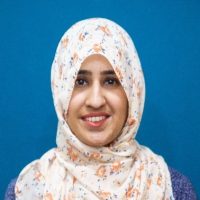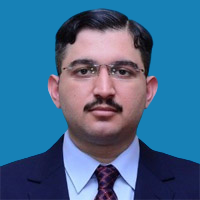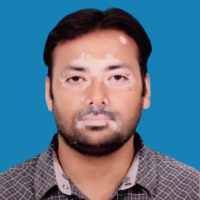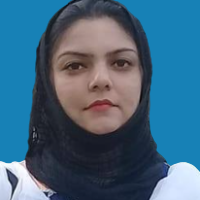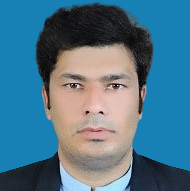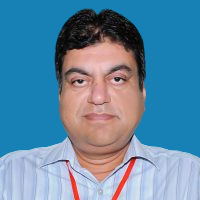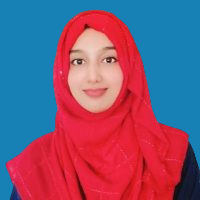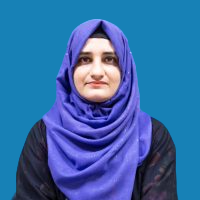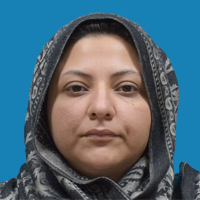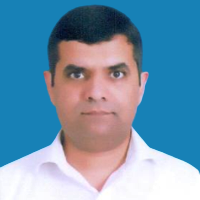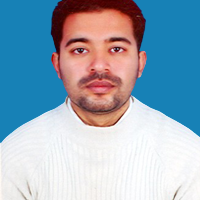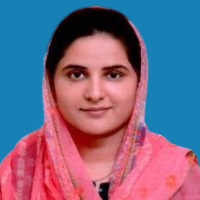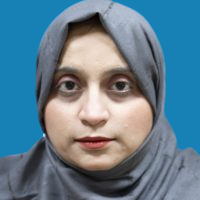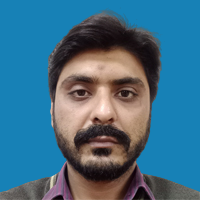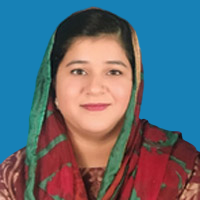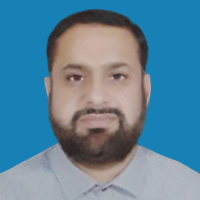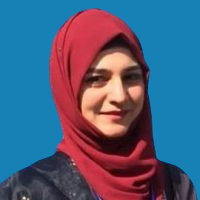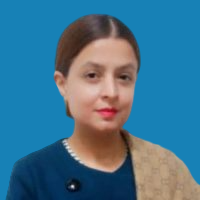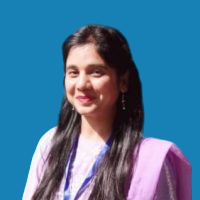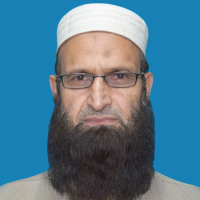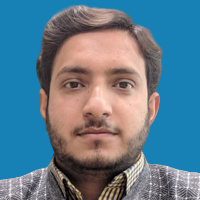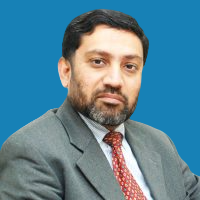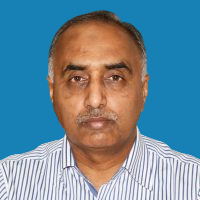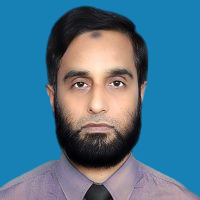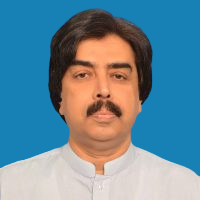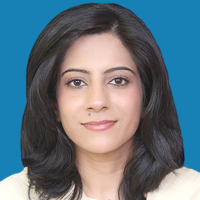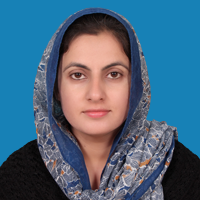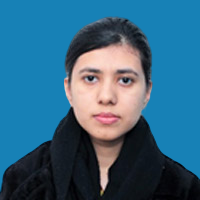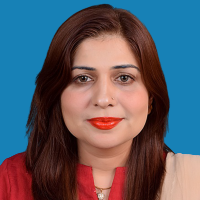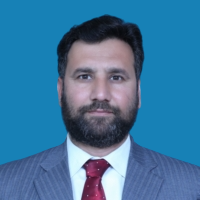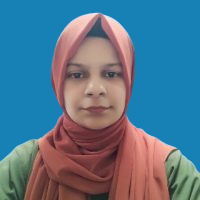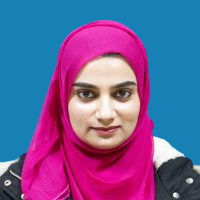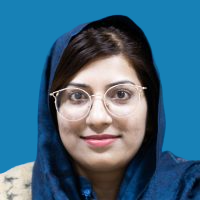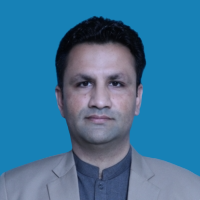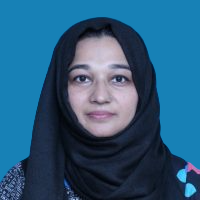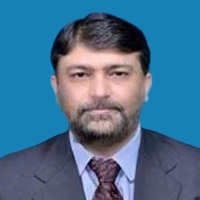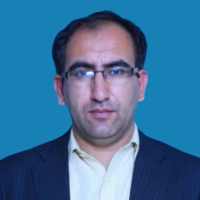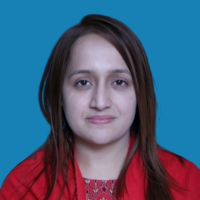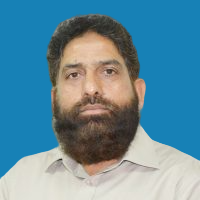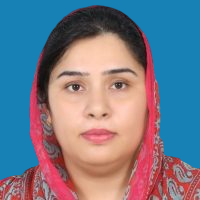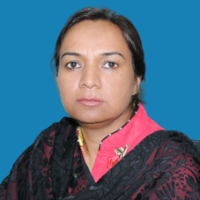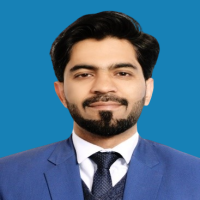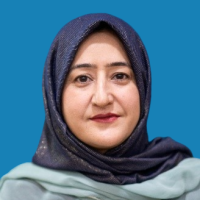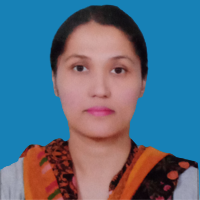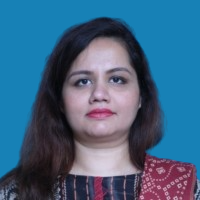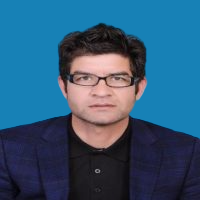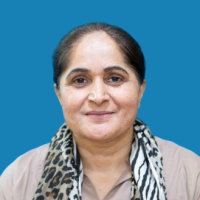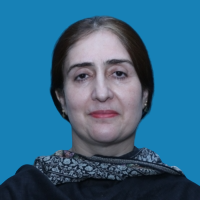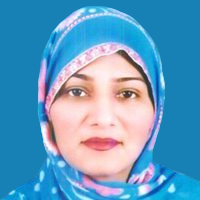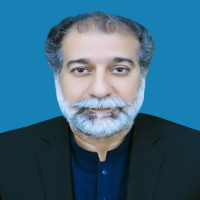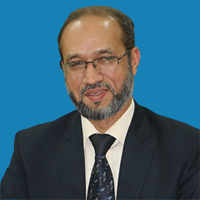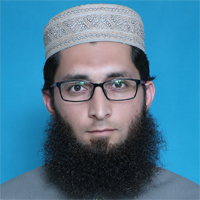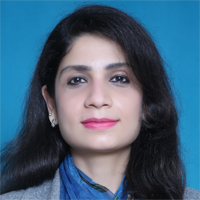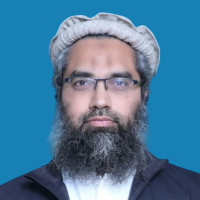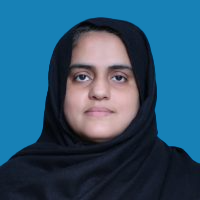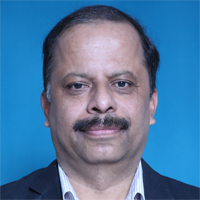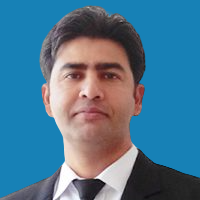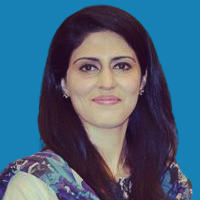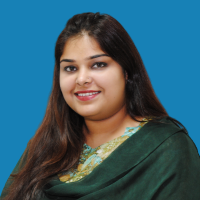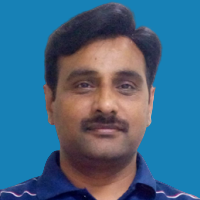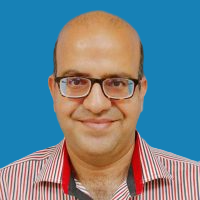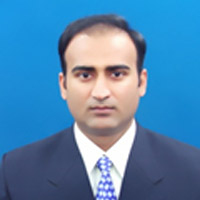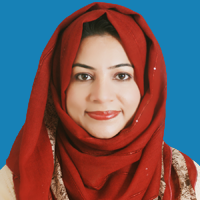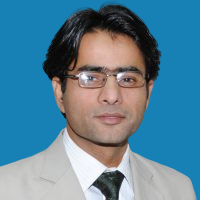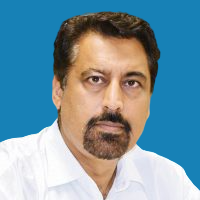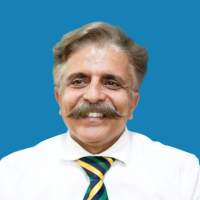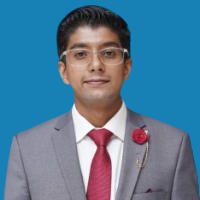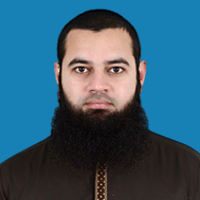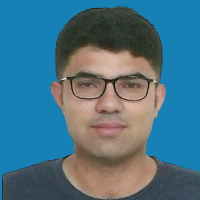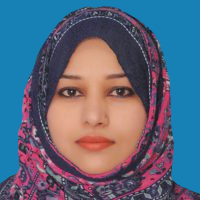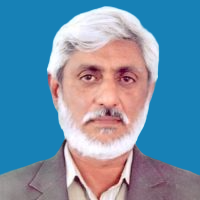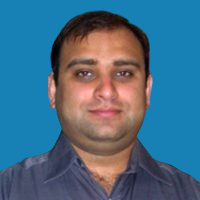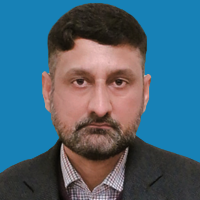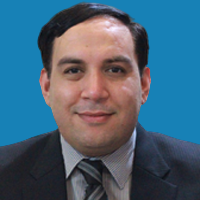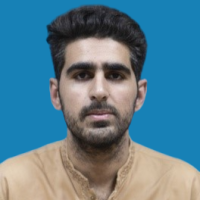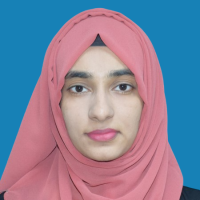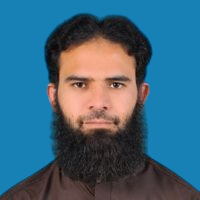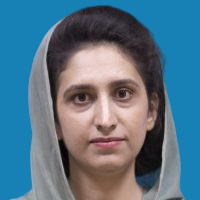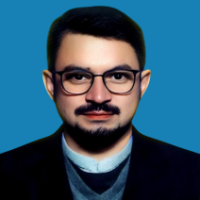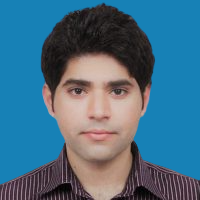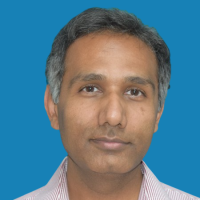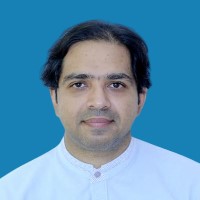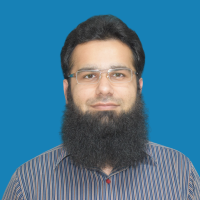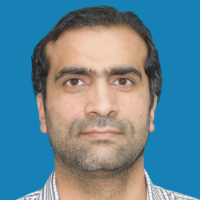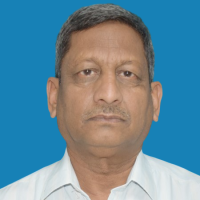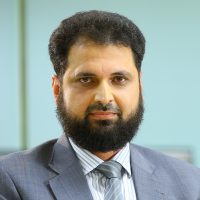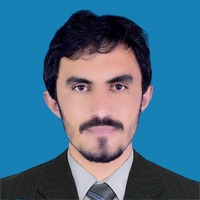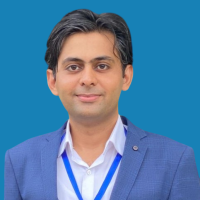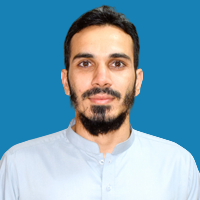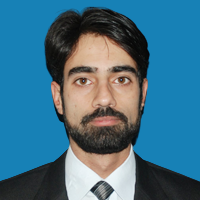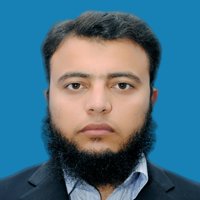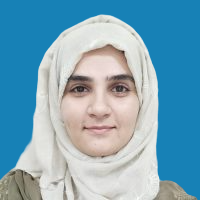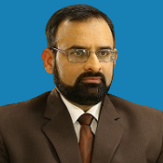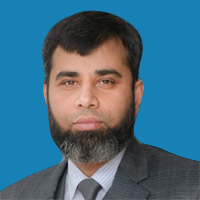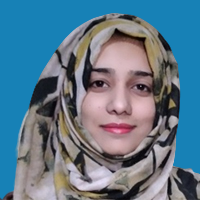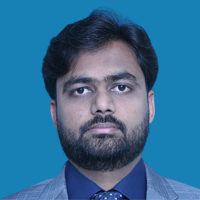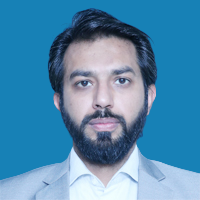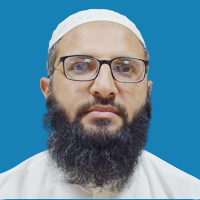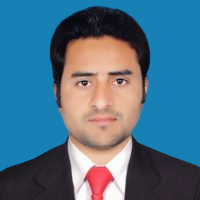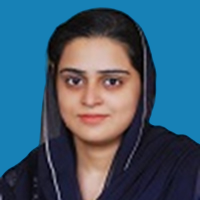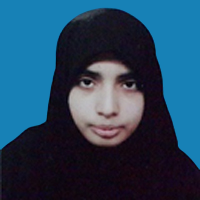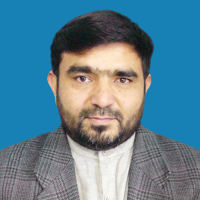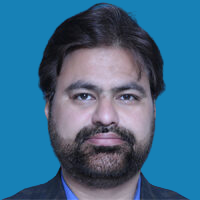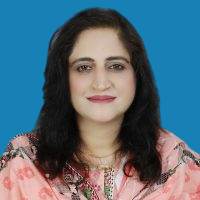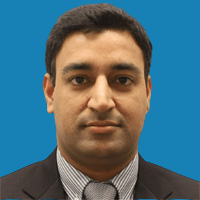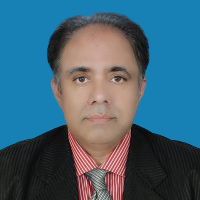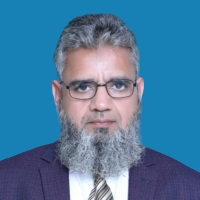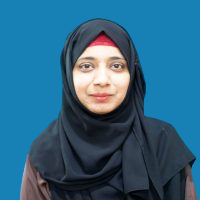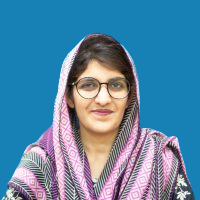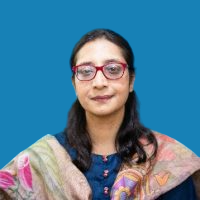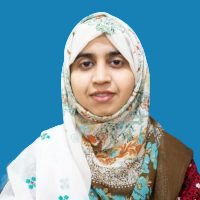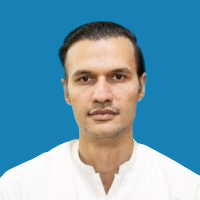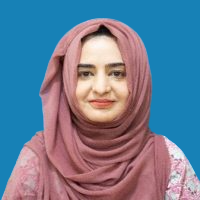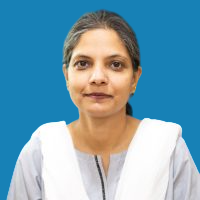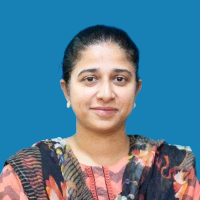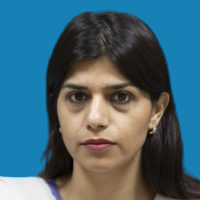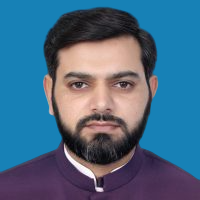
PROFILE SUMMARY
- Dr. Noor M. Khan received the B.Sc. degree in electrical engineering from UET, Lahore, Pakistan, in 1998. He held several positions in WorldCall Communications and PTCL from 1999 to 2002. In 2002, he joined the University of New South Wales (UNSW), Sydney, Australia, where he completed his Ph.D. in electrical engineering in 2006. From 2002 to 2006, he worked as casual academic with UNSW, Australia. After returning to Pakistan in 2006, he worked with GIK Institute of Engineering Sciences Technology and Mohammad Ali Jinnah University. Currently, he is working as Professor and Head of the Department of Electrical Computer Engineering with Capital University of Science and Technology (CUST), Islamabad, Pakistan. He has authored more than hundred research publications in reputed international journals and refereed conferences. Recently, he has served as the General Chair of the 16th IEEE International Conference on Emerging Technologies in December 2021. He has supervised twelve Ph.D. and more than forty MS students. He has been awarded Research Productivity Awards by the Pakistan Council for Science and Technology (PCST) for the years 2011 and 2012 and CUST Research Excellence Award for the year 2021, respectively. His research interests include wireless networks and mobile communications
| QUALIFICATION | |||
| PhD | Electrical Engineering | University of New South Wales (UNSW), Sydney, NSW, Australia | 2006 |
| BSc | Electrical Engineering | University of Engineering and Technology, Lahore | 1998 |
-
TEACHING EXPERIENCE Professor Capital University of Science & Technology (CUST), Islamabad, Pakistan Since – 2015 Professor Mohammad Ali Jinnah University, Islamabad, Pakistan 2013 – 2015 Associate Professor Mohammad Ali Jinnah University, Islamabad, Pakistan 2008 – 2013 Assistant Professor Mohammad Ali Jinnah University, Islamabad, Pakistan 2007 – 2008 Assistant Professor Ghulam Ishaq Khan Institute of Engineering Sciences and Technology, Topi, Khyber Pakhtunkhwa, Pakistan 2006 – 2007
| MEMBERSHIP OF PROFESSIONAL BODIES | |||
| ICET | Co-Chair, Program Committee in International Conference on Emerging Technologies | ||
| IEEE | Chair, Technical Program Committee IEEE International Conference on Emerging Technologies (ICET-2012), Islamabad, Pakistan. | ||
| IEEE | Co-Chair, Technical Program Committee IEEE International Multi-topic Conference (INMIC-2009), Islamabad, Pakistan | ||
| IEEE | Senior Member, Institute of Electrical and Electronics Engineers | ||
| ICS | Member, IEEE Communications Society | ||
| PEC | Lifetime Membership, Pakistan Engineering Council | ||
| ITCSG | EEE Technical Committee on Smart Grid | ||
| RESEARCH AREAS / INTERESTS | |||
| 1. | Wireless and Cellular Mobile Communication Systems | ||
| 2. | Wireless Networks | ||
| 3. | Fading Channel Characterization | ||
| 4. | Airborne Internet Access | ||
-
RESEARCH SUPERVISION 1. PhD Adaptive Power Control-based Energy-Efficient Routing (APCEER) in Wireless Sensor Networks 2. PhD A Low Complexity Signed-Response Based Secure and Energy Efficient Routing Protocol for Wireless Sensor Networks 3. PhD Modeling and Characterization of Ground-to-Air Communication Channel 4. PhD Partition Identification and Re-connectivity in Wireless Sensor Networks 5. PhD QoS Based Airborne Internet Access Through Submarine Optical Fiber Cables 6. MS Gradient Cost-Field Establishment (GRACE) for an Energy-Aware Routing in Wireless Sensor Networks 7. MS Power Management and Reliability in Wireless Sensor Networks 8. MS Performance Comparison of Space-Time Codes in Rayleigh Fading Environments 9. MS Adaptive Coding and Modulation Scheme Selection for OFDM-based Systems by using Generalized Concatenated Codes 10. MS Adaptive Modulation for Optimized Data Rates in MIMO Communication Systems 11. MS On Comparing the Amount of Fading for MIMO Diversity Systems Working over Nakagami and Rayleigh Fading Channels 12. MS The Impact of User Loading on the Diversity Gain of a System that Combines Spatial Diversity and Multiuser Diversity 13. MS Spatial Characteristics of MIMO Radio Channels in Mobile-to-Mobile Environment 14. MS Model Based Channel Estimation For DS-CDMA Systems in Non-Isotropic Scattering Environments 15. MS Spatio-Temporal Characteristics of Cellular Mobile Channel using Directional Antennas 16. MS Effect of Directional Antennas at Both Ends of the Radio Link on the Fading Statistics of Cellular Mobile Channel 17. MS Modeling, Tracking, and Equalization of Time-Varying Fading Channels for MIMO Communication Systems 18. MS Statistical Analysis of Mobile Fading Channel 19. MS LoMoB: A New Scheme for Node Localization in Sparsely Populated Wireless Sensor Networks 20. MS Null Steering Techniques: A Comparative Analysis and Improvements 21. MS Performance Comparison of Adaptive Beamforming Algorithms for Smart Antenna Systems 22. MS Performance Comparison of OFDM Systems based on Optimized Pilots over Ricean and Rayleigh Fading Channels 23. MS Statistical Analysis of a Mobile to Mobile Ricean Fading Channel 24. MS Dynamic Power Control of Wireless Sensor Networks in Time-Varying Propagation Environment 25. MS Time and Angle of Arrival Statistics of Mobile to Mobile Communication Channel using Circular Scattering Model 26. MS A Comparative Analysis of Adaptive Signal Processing Techniques with Applications in Channel Equalization and Interference Cancellation 27. MS A Simple Transmit Diversity Technique for Wireless Communications 28. MS Angle of Arrival Statistics of 2D and 3D Scattering Models 29. MS Experimental Validation of the Performance Parameters of Routing Protocols in Wireless Sensor Networks 30. MS Investigation of 3D Spatial Channel Models on the basis of Multivariate Analysis 31. MS Use of Open-Source Platform in Designing of Low-Cost Prototype Wireless Sensor Mote 32. MS MIMO-OFDM Communication System with Opportunistic Diversity-Order Selection and KF-based Channel Estimation 33. MS Impact of Speed on Channel Characterization in Vehicular Adhoc Networks (VANets) 34. MS A Comparative Analysis of Non-Linear Adaptive Filters on GPS/DR Navigation System 35. MS Establishing Connectivity of a Disconnected Cluster in Partitioned Wireless Sensor Networks 36. MS Fading Statistics of mmWaves Channel for 5G Mobile Communication Systems 37. MS Effect of Elevation on the Fading Statistics of Cellular Mobile Communication Channels 38. MS Quantitative Performance Comparison of M-ary Order Modulation Schemes with and without FEC Coding in OFDM and MC-CDMA Systems over Fading Channels 39. MS Comparative Performance Analysis of Complex and Non-Complex Versions of SLM and PTS PAPR Reduction Schemes in OFDM Systems 40. MS Cost-Effective Direction of Arrival Estimation Using Pairwise Antenna Geometry 41. MS Characterization of Reflection Co-efficient for Ground-to-Aircraft and Satellite-to-Aircraft Communication Links 42. MS 3-D Direction of Arrival Estimation using MUSIC Averaging Method 43. MS Validation of PDASP for Quasi-Stationary MIMO Channel Estimation Through Processing-Inefficient Low-Cost Communication Platforms 44. MS Improvement in the Interception Vulnerability Level of Encryption Mechanism in GSM 45. MS Low-Communication Parallel Distributed Adaptive Signal Processing (LC-PDASP) Architecture for Processing-Inefficient Low-Cost Platforms 46. MS Implementation Challenges of 5G Cellular in Pakistan 47. MS Validation of Pathloss Models Through Field Measurements 48. MS Graphene Based Material for Supercapacitance Application 49. MS Functional Enhancement of Physical Optics Facet (POFACET©) Software Package for RCS Computations 50. MS Multi-Ray Channel Modeling for Ground-to-Air and Air-to-Air Communication Links 51. MS High Gain FSS-based Aperture Coupled Patch Antenna Array for X-Band Satellite Applications 52. PhD Modeling and Characterization of Cellular Mobile Channels for 3-D Radio Propagation Environments 53. PhD Modeling of MIMO Radio Channels for Mobile-to-Mobile and Umbrella Cell Based Cellular Communication Systems 54. PhD Modeling and Characterization of Mobile-to-Mobile Communication Channels 55. PhD Processing-Efficient Distributed Adaptive RLS Filtering for Computationally-Constrained Platforms 56. PhD Bandpass Sampling Methodology for Uniformly Spaced Multiband Energy-Sparse Spectrum 57. PhD Coverage Analysis of Dense Heterogeneous Cellular Networks using Dual-Slope Path Loss Model 58. PhD SC-FDMA Radar: Waveform Design and Signal Processing
| SR. | JOURNAL PUBLICATIONS | YEAR |
|---|---|---|
| 1 | H. Raza, W. Abbasi, K. Aurangzeb, N. M. Khan, M. S. Anwar, and M. Alhussein, “Parameter estimation of the systems with irregularly missing data by using sequentially parallel distributed adaptive signal processing architecture,” Alexandria Engineering Journal, vol. 82, pp. 139–144, 2023. | 2023 |
| 2 | H. Raza, I. Ahmad, N. M. Khan, W. Abbasi, M. S. Anwar, S. Ahmad, and M. A. El-Affendi, “Validation of parallel distributed adaptive signal processing (pdasp) framework through processing-inefficient low-cost platforms,” Mathematics, vol. 10, no. 23, p. 4600, 2022. | 2022 |
| 3 | S. J. Nawaz, S. K. Sharma, B. Mansoor, M. N. Patwary, and N. M. Khan, “Non-coherent and backscatter communications: Enabling ultra-massive connectivity in 6g wireless networks,” IEEE Access, vol. 9, pp. 38 144–38 186, 2021. | 2021 |
| 4 | N. Hassan and N. M. Khan, “Cost-effective reliable transmission service for internet of flying things,” International Journal of Distributed Sensor Networks, vol. 17, no. 6, p. 15501477211017820, 2021. | 2021 |
| 5 | M. S. Khan, N. M. Khan, A. Khan, F. Aadil, M. Tahir, and M. Sardaraz, “A low-complexity, energy-efficient data securing model for wireless sensor network based on linearly complex voice encryption mechanism of gsm technology,” International Journal of Distributed Sensor Networks, vol. 17, no. 5, p. 15501477211018623, 2021. | 2021 |
| 6 | H. Raza, G. Hussain, and N. M. Khan, “Low communication parallel distributed adaptive signal processing (lc-pdasp) architecture for processing-inefficient platforms,” Turkish Journal of Electrical Engineering and Computer Sciences, vol. 29, no. 2, pp. 663–672, 2021. | 2021 |
| 7 | K. Shehzad, N. M. Khan, and J. Ahmed, “Performance analysis of coverage-centric heterogeneous cellular networks using dual-slope path loss model,” Computer Networks, vol. 185, p. 107672, 2021. | 2021 |
| 8 | K. Nasr and N. M. Khan, “Toward connectivity of a disconnected cluster in partitioned wireless sensor network for time-critical data collection,” International Journal of Distributed Sensor Networks, vol. 16, no. 12, p. 1550147720984654, 2020. | 2020 |
| 9 | M. M. Y. Masood and N. M. Khan, “G2A Communication Channel Modeling and Characterization using Confocal Prolates,” Wireless Personal Communications, vol. 115, no. 1, pp. 745–787, 2020. | 2020 |
| 10 | R. Saadia and N. M. Khan, “Single carrier-frequency division multiple access radar: Waveform design and analysis,” IEEE Access, vol. 8, pp. 35 742–35 751, 2020. | 2020 |
| 11 | H. Raza and N. M. Khan, “Tracking performance of robust rls algorithm for mimo channel estimation,” Wireless Personal Communications, vol. 111, no. 1, pp. 395–409, 2020. | 2020 |
| 12 | K. Shehzad, N. M. Khan, and J. Ahmed, “Impact of frequency reuse and flexible cell association on the performance of dense heterogeneous cellular networks using dual-slope path loss model,” IEEE Access, vol. 7, pp. 166 214–166 234, 2019. | 2019 |
| 13 | S. M. Gulfam, S. J. Nawaz, K. B. Baltzis, A. Ahmed, N. M. Khan, “Characterization of Angular Spread and Fading Statistics of mmWave range (28 GHz and 38 GHz) Outdoor and Indoor Radio Propagation Channels,” Technologies (MDPI Technologies), vol. 7, no. 1, pp. 1-9, 2019. | 2019 |
| 14 | M. Muzzammil, T. Ahmad, N. M. Khan, and L. Wan, “Low cost, faster detection of cognitive radio through filter banks with bandpass sampling,” Physical Communication, vol. 33, pp. 1–8, 2019. | 2019 |
| 15 | M. Y. Wani, M. Riaz, and N. M. Khan, “Geometrical modeling of scattering environment for highways in umbrella cell based mimo communication systems,” Wireless Personal Communications, vol. 101, pp. 59–74, 2018. | 2018 |
| 16 | M. Y. M. Mirza, N. M. Khan, A. Jamal, and R. Ramer, “Characterization of spatial reflection co-efficient for ground-to-aircraft and satellite-to-aircraft communication,” The Applied Computational Electromagnetics Society Journal (ACES), pp. 56–68, 2018. | 2018 |
| 17 | M. Raza, N. Aslam, H. Le-Minh, S. Hussain, Y. Cao, and N. M. Khan, “A critical analysis of research potential, challenges, and future directives in industrial wireless sensor networks,” IEEE Communications Surveys & Tutorials, vol. 20, no. 1, pp. 39–95, 2017. | 2017 |
| 18 | H. Raza and N. M. Khan, “Low complexity linear channel estimation for mimo communication systems,” Wireless Personal Communications, vol. 97, pp. 5031–5044, 2017. | 2017 |
| 19 | M. Y. Wani and N. M. Khan, “Characterization of 3d elliptical spatial channel model for mimo mobile-to-mobile communication environment,” Wireless Personal Communications, vol. 96, pp. 6325–6344, 2017. | 2017 |
| 20 | N. M. Khan and H. Raza, “Processing-efficient distributed adaptive rls filtering for computationally constrained platforms,” Wireless Communications and Mobile Computing, vol. 2017, no. 1, p. 1248796, 2017. | 2017 |
| 21 | M. Y. M. Mirza, G. Ahmed, and N. M. Khan, “Model-based adaptive transmission power control (matpoc) for wireless sensor networks in fading environment,” Journal of Circuits, Systems and Computers, vol. 26, no. 09, p. 1750143, 2017. | 2017 |
| 22 | S. M. Shah, R. Samar, N. M. Khan, and M. A. Z. Raja, “Design of fractional-order variants of complex lms and nlms algorithms for adaptive channel equalization,” Nonlinear Dynamics, vol. 88, pp. 839–858, 2017. | 2017 |
| 23 | T. Ahmed and N. M. Khan, “Direct radio frequency sampling methodology for multiple signals in an energy-sparse spectrum,” Turkish Journal of Electrical Engineering and Computer Sciences, vol. 24, no. 6, pp. 4637–4647, 2016. | 2016 |
| 24 | S. J. Nawaz, N. M. Khan, and R. Ramer, “3-d spatial spread quantifiers for multipath fading wireless channels,” IEEE Wireless Communications Letters, vol. 5, no. 5, pp. 484–487, 2016. | 2016 |
| 25 | M. Saud Khan and N. M. Khan, “Low complexity signed response based sybil attack detection mechanism in wireless sensor networks,” Journal of Sensors, vol. 2016, no. 1, p. 9783072, 2016. | 2016 |
| 26 | M. Y. Wani, M. Riaz, and N. M. Khan, “Modeling and characterization of mimo mobile-to-mobile communication channels using elliptical scattering geometry,” Wireless Personal Communications, vol. 91, pp. 509–524, 2016. | 2016 |
| 27 | S. M. Shah, R. Samar, N. M. Khan, and M. A. Z. Raja, “Fractional-order adaptive signal processing strategies for active noise control systems,” Nonlinear Dynamics, vol. 85, pp. 1363–1376, 2016. | 2016 |
| 28 | S. J. Nawaz, M. I. Tiwana, M. Patwary, N. M. Khan, M. I. Tiwana, and A. H. Haseeb, “Ga based sensing of sparse multipath channels with superimposed training sequence,” Elektronika ir Elektrotechnika, vol. 22, no. 1, pp. 87–91, 2016. | 2016 |
| 29 | I. H. Syed and N. M. Khan, “Mimo–ofdm communication system with opportunistic diversity-order selection and kf-based channel estimation,” Wireless Personal Communications, vol. 84, no. 1, pp. 587–603, 2015. | 2015 |
| 30 | S. J. Nawaz, M. Riaz, N. M. Khan, and S. Wyne, “Temporal analysis of a 3d ellipsoid channel model for the vehicle-to-vehicle communication environments,” Wireless Personal Communications, vol. 82, pp. 1337–1350, 2015. | 2015 |
| 31 | S. J. Nawaz, N. M. Khan, M. I. Tiwana, N. Hassan, and S. I. Shah, “Airborne internet access through submarine optical fiber cables,” IEEE Transactions on Aerospace and Electronic Systems, vol. 51, no. 1, pp. 167–177, 2015. | 2015 |
| 32 | M. Riaz, N. M. Khan, and S. J. Nawaz, “A generalized 3-d scattering channel model for spatiotemporal statistics in mobile-to-mobile communication environment,” IEEE Transactions on Vehicular Technology, vol. 64, no. 10, pp. 4399–4410, 2014. | 2014 |
| 33 | M. Raza, G. Ahmed, and N. M. Khan, “Power control-based grace (pc-grace) routing protocol for wireless sensor networks,” Journal of Networking Technology, vol. 5, no. 4, p. 137, 2014. | 2014 |
| 34 | N. M. Khan, G. Ahmed, “Adaptive power control-based energy efficient routing (apceer) in wireless sensor networks,” Ph.D. dissertation, Mohammad Ali Jinnah University Islamabad, 2013. | 2013 |
| 35 | M. Riaz, S. J. Nawaz, and N. M. Khan, “3d ellipsoidal model for mobile-to-mobile radio propagation environments,” Wireless personal communications, vol. 72, pp. 2465–2479, 2013. | 2013 |
| 36 | Z. M. Loni and N. M. Khan, “Analysis of fading statistics in cellular mobile communication systems,” The Journal of Supercomputing, vol. 64, pp. 295–309, 2013. | 2013 |
| 37 | S. J. Nawaz, K. I. Ahmed, M. N. Patwary, and N. M. Khan, “Superimposed training-based compressed sensing of sparse multipath channels,” IET Communications, vol. 6, no. 18, pp. 3150–3156, 2012. | 2012 |
| 38 | S. J. Nawaz, N. M. Khan, M. N. Patwary, and M. Moniri, “Effect of directional antenna on the doppler spectrum in 3-d mobile radio propagation environment,” IEEE Transactions on Vehicular Technology, vol. 60, no. 7, pp. 2895–2903, 2011. | 2011 |
| 39 | S. Razzaq, and N. M. Khan, “Performance Comparison of Adaptive Beamforming Algorithms for Smart Antenna Systems,” World Applied Sciences Journal, Vol. 11, no. 7, pp. 775-785, 2010. | 2010 |
| 40 | S. J. Nawaz, B. H. Qureshi, and N. M. Khan, “A generalized 3-d scattering model for a macrocell environment with a directional antenna at the bs,” IEEE Transactions on vehicular technology, vol. 59, no. 7, pp. 3193–3204, 2010. | 2010 |
| 41 | N. M. Khan, Z. Khalid, G. Ahmed, “GRAdient Cost-field Establishment (GRACE) in Wireless Sensor Networks”, EURASIP Journal on Wireless Communications and Networking, Vol. 2009, pp. 1-15, 2009. | 2009 |
| 42 | N. M. Khan, M. T. Simsim, and P. B. Rapajic, “A generalized model for the spatial characteristics of the cellular mobile channel,” IEEE Transactions on Vehicular Technology, vol. 57, no. 1, pp. 22–37, 2008. | 2008 |
| 43 | Z. Khalid, G. Ahmed, and N. M. Khan, “Impact of mobile sink speed on the performance of wireless sensor networks,” Journal of Information & Communication Technology, vol. 1, no. 2, pp. 49–55, 2007. | 2007 |
| 44 | N. M. Khan, M. T. Simsim, and R. Ramer, “Modeling spatial aspects of mobile channel for macrocells using gaussian scattering distribution,” in 2006 3rd International Symposium on Wireless Communication Systems. IEEE, pp. 616–620, 2006. | 2006 |
| SR. | CONFERENCE PUBLICATIONS | YEAR |
|---|---|---|
| 1 | T. Ahmed and N. M. Khan, “A simple and low cost land-mobile-radio design for interoperability among radio networks in a public safety scenario,” in 2019 International Conference on Communication Technologies (ComTech). IEEE, 2019, pp. 1–6. | 2019 |
| 2 | F. Ijaz, M. Riaz, N. M. Khan, and M. Y. Wani, “Elliptical channel model employing propagation of signals in 3d space,” in 2016 International Conference on Emerging Technologies (ICET). IEEE, 2016, pp. 1–5. | 2016 |
| 3 | A. Ahmed, S. J. Nawaz, N. M. Khan, M. N. Patwary, and M. Abdel-Maguid, “Angular characteristics of a unified 3-d scattering model for emerging cellular networks,” in 2015 IEEE International Conference on Communications (ICC). IEEE, 2015, pp. 2450–2456. | 2015 |
| 4 | N. Hassan, N. M. Khan, G. Ahmed, and R. Ramer, “Real-time gradient cost establishment (rt-grace) for an energy-aware routing in wireless sensor networks,” in 2013 IEEE eighth international conference on intelligent sensors, sensor networks and information processing. IEEE, 2013, pp. 54–59. | 2013 |
| 5 | M. M. Y. Masood, G. Ahmed, and N. M. Khan, “A kalman filter based adaptive on demand transmission power control (aodtpc) algorithm for wireless sensor networks,” in 2012 International Conference on Emerging Technologies. IEEE, 2012, pp. 1–6. | 2012 |
| 6 | M. Raza, G. Ahmed, and N. M. Khan, “Experimental evaluation of transmission power control strategies in wireless sensor networks,” in 2012 International Conference on Emerging Technologies. IEEE, 2012, pp. 1–4. | 2012 |
| 7 | S. Iqbal, B. H. Qureshi, and N. M. Khan, “Effect of directional antennas at both ends of the link on fading statistics,” in 2012 International Conference on Future Communication Networks. IEEE, 2012, pp. 58–62. | 2012 |
| 8 | M. Riaz and N. M. Khan, “Closed-form expressions for correlation function and power density spectrum in mimo mobile-to-mobile channels using two-erose-ring model,” in 2011 International Conference on Information and Communication Technologies. IEEE, 2011, pp. 1–5. | 2011 |
| 9 | M. M. Y. Masood, G. Ahmed, and N. M. Khan, “Modified on demand transmission power control for wireless sensor networks,” in 2011 International Conference on Information and Communication Technologies. IEEE, 2011, pp. 1–6. | 2011 |
| 10 | M. Raza, G. Ahmed, N. M. Khan, M. Awais, and Q. Badar, “A comparative analysis of energy-aware routing protocols in wireless sensor networks,” in 2011 International Conference on Information and Communication Technologies. IEEE, 2011, pp. 1–5. | 2011 |
| 11 | G. Ahmed, N. M. Khan, and M. M. Y. Masood, “A dynamic transmission power control routing protocol to avoid network partitioning in wireless sensor networks,” in 2011 International Conference on Information and Communication Technologies. IEEE, 2011, pp. 1–4. | 2011 |
| 12 | Z. M. Loni, R. Ullah, and N. M. Khan, “Analysis of fading statistics based on angle of arrival measurements,” in 2011 International Workshop on Antenna Technology (iWAT). IEEE, 2011, pp. 314–319. | 2011 |
| 13 | A. H. Kazmi and N. M. Khan, “Effect of scattering around bs on the spatial statistics of mobile channel in macrocell environment,” in 2010 International Conference on Information and Emerging Technologies. IEEE, 2010, pp. 1–5. | 2010 |
| 14 | A. H. Kazmi and N. M. Khan, “Channel tracking and equalization using kalman estimation for mimo systems in non-isotropic ricean fading environment,” in 2010 International Conference on Information and Emerging Technologies. IEEE, 2010, pp. 1–5. | 2010 |
| 15 | Z. M. Loni and N. M. Khan, “Analysis of fading statistics based on geometrical and statistical channel models,” in 2010 6th International Conference on Emerging Technologies (ICET). IEEE, 2010, pp. 221–225. | 2010 |
| 16 | S. J. Nawaz, M. Patwary, N. M. Khan, and H. Yu, “3-d gaussian scatter density propagation model employing a directional antenna at bs,” in 2010 5th Advanced Satellite Multimedia Systems Conference and the 11th Signal Processing for Space Communications Workshop. IEEE, 2010, pp. 395–400. | 2010 |
| 17 | S. J. Nawaz, B. H. Qureshi, N. M. Khan, and M. Abdel-Maguid, “Effect of directional antenna on the spatial characteristics of 3-d macrocell environment,” in 2010 2nd International Conference on Future Computer and Communication, vol. 1. IEEE, 2010, pp. V1–552. | 2010 |
| 18 | S. J. Nawaz, B. H. Qureshi, and N. M. Khan, “Angle of Arrival Statistics at Base Station using Directional Antenna in 3-D Scattering Model,” in Proc. 13th IEEE International Multitopic Conference (IEEE INMIC 2009), Islamabad, Pakistan, December 2009, pp. 210-214. | 2009 |
| 19 | R. A. Qamar and N. M. Khan, “Null steering, a comparative analysis,” in 2009 IEEE 13th International Multitopic Conference. IEEE, 2009, pp. 1–5. | 2009 |
| 20 | M. Ahmed and N. M. Khan, “Kaiman filter based non-isotropic channel estimation in space-time coded ds-cdma systems,” in 2009 IEEE 13th International Multitopic Conference. IEEE, 2009, pp. 1–5. | 2009 |
| 21 | S. Iqbal, B. H. Qureshi, and N. M. Khan, “Effect of Directional Antennas at Both Ends of the Link on the Doppler Power Spectrum,” in Proc. 13th IEEE International Multitopic Conference (IEEE INMIC 2009), Islamabad, Pakistan, 2009, pp. 388-391. | 2009 |
| 22 | K. Ashraf and N. M. Khan, “Performance comparison of alamouti st codes with different sttc over rayleigh fading channels,” in 2009 IEEE 13th International Multitopic Conference. IEEE, 2009, pp. 1–5. | 2009 |
| 23 | B. H. Qureshi, S. Iqbal, and N. M. Khan, “Effect of directional antennas at both ends of the link on spatial characteristics of cellular and mobile channel,” in 2009 International Conference on Emerging Technologies. IEEE, 2009, pp. 87–93. | 2009 |
| 24 | M. Ahmed and N. M. Khan, “Model based approach for time-varying channel estimation in ds-cdma systems using non-isotropic scattering environment,” in 2009 International Conference on Emerging Technologies. IEEE, 2009, pp. 62–65. | 2009 |
| 25 | G. Ahmed, H. J. Choe, N. M. Khan and R. Ramer, “A Comparative Study and Analysis of SunSPOT and MicaZ in terms of RSSI and Packet Delivery for Wireless Sensor Networks,” in Proc. 10th IEEE International Symposium on World of Wireless, Mobile and Multimedia Networks. 4th IEEE Workshop on Advanced Experimental Activities on Wireless Networks & Systems, Kos, Greece, 2009. | 2009 |
| 26 | N. M. Khan, Z. Khalid, and G. Ahmed, “Gradient cost establishment (grace) for an energy-aware routing in wireless sensor networks,” EURASIP Journal on Wireless Communications and Networking, vol. 2009, pp. 1–15, 2009. | 2009 |
| 27 | K. Ashraf, N. M. Khan, and R. Ramer, “Performance comparison of space-time trellis codes in fading environments,” Proceedings of the 25th International Review of Progress in Applied Computational Electromagnetics (ACES), California, USA (Mar. 2009), pp. 742–747. | 2009 |
| 28 | G. Ahmed, N. M. Khan, Z. Khalid, and R. Ramer, “Cluster head selection using decision trees for wireless sensor networks,” in 2008 International Conference on Intelligent Sensors, Sensor Networks and Information Processing. IEEE, 2008, pp. 173–178. | 2008 |
| 29 | S. N. Khan, N. M. Khan, and M. Ahmed, “A robust and energy efficient global gradient setup mechanism for gradient based routing in wireless sensor networks,” in 2008 14th Asia-Pacific Conference on Communications. IEEE, 2008, pp. 1–5. | 2008 |
| 30 | R. Sultan, N. M. Khan, and M. Shafiq, “Low duty-cycling with spline-based curve fitting of sensor data in wireless sensor networks,” in 2008 Fourth International Conference on Networked Computing and Advanced Information Management, vol. 1. IEEE, 2008, pp. 497–501. | 2008 |
| 31 | R. Sultan, M. Shafiq, N. M. Khan, “Reliability in Wireless Sensor Networks using Soft-Sensing,” in Proc. 7th IEEE International Conference on Computer Information Systems and Industrial Management Applications, Ostrava, Czech Republic, 2008, pp. 139-144. | 2008 |
| 32 | N. M. Khan, I. Ali, Z. Khalid, G. Ahmed, R. Ramer, and A. A. Kavokin, “Quasi centralized clustering approach for an energy-efficient and vulnerability-aware routing in wireless sensor networks,” in Proceedings of the 1st ACM International Workshop on Heterogeneous Sensor and Actor Networks, 2008, pp. 67–72. | 2008 |
| 33 | G. Ahmed, Z. Khalid, N. M. Khan, and P. Vigneras, “Energy efficient and vulnerability aware routing in wireless sensor networks,” in 2008 Second International Conference on Electrical Engineering. IEEE, 2008, pp. 1–4. | 2008 |
| 34 | Z. Khalid, N. M. Khan, and R. Ramer, “Impact of Cluster Head Energy on the Lifetime of Quasi-centralized Wireless Sensor Networks,” in Proc. 23rd Progress in Electromagnetic Research Symposium (PIERS 2008), Hangzhou, China, 2008. | 2008 |
| 35 | G. Ahmed, N. M. Khan, and R. Ramer, “Cluster head selection using evolutionary computing in wireless sensor networks,” in Progress In Electromagnetics Research Symposium, Hangzhou, China, 2008, pp. 883–886. | 2008 |
| 36 | G. Ahmed, N. M. Khan, and R. Ramer, “Robust Transmission Technique for Arbitrary 3D Models over Wireless Multimedia Sensor Networks,” in Proc. 23rd Progress in Electromagnetic Research Symposium, Hangzhou, China, 2008. | 2008 |
| 37 | Z. Khalid, G. Ahmed, and N. M. Khan, “Impact of Mobile Sink Speed on the Performance of Wireless Sensor Networks,” Journal of Information & Communication Technology, vol. 1, no. 2, pp. 49–55, 2007. | 2007 |
| 38 | Z. Khalid, G. Ahmed, and N. M. Khan, “A Real-Time Energy-Aware Routing Strategy for Wireless Sensor Networks,” in 2007 Asia-Pacific Conference on Communications. IEEE, 2007, pp. 381–384. | 2007 |
| 39 | N. M. Khan, Z. Khalid, G. Ahmed, and M. Yasin, “A Robust Routing Strategy for Wireless Sensor Networks,” in 2007 International Conference on Electrical Engineering. IEEE, 2007, pp. 1–5. | 2007 |
| 40 | M. T. Simsim, N. M. Khan, R. Ramer, “Geometrical and Statistical Properties of the Scattering Area in Multipath Propagation Modeling,” in Proc. 23rd Annual Review of Progress in Applied Computational Electromagnetics, March 19-23, 2007, Verona, Italy. | 2007 |
| 41 | M. T. Simsim, N. M. Khan, and R. Ramer, “Geometry of the Scattering Disc in Physical Channel Modeling,” in Proceedings of Progress in Electromagnetics Research Symposium (PIERS), 2007. | 2007 |
| 42 | M. T. Simsim, N. M. Khan, and R. Ramer, “Rake Receiver from Physical Channel Modeling Perspective,” in 2006 International Conference on Wireless Communications, Networking and Mobile Computing. IEEE, 2006, pp. 1–4. | 2006 |
| 43 | N. M. Khan, M. T. Simsim, and R. Ramer, “Modeling Spatial Aspects of Mobile Channel for Macrocells Using Gaussian Scattering Distribution,” in 2006 3rd International Symposium on Wireless Communication Systems. IEEE, 2006, pp. 616–620. | 2006 |
| 44 | T. Gulrez, S. Challa, T. Yaqub, J. Katupitiya, N. M. Khan, and R. Ramer, “Sensor Relevance Validation for Autonomous Mobile Robot Navigation,” in 2006 IEEE Conference on Robotics, Automation and Mechatronics. IEEE, 2006, pp. 1–6. | 2006 |
| 45 | M. T. Simsim, N. M. Khan, R. Ramer, and P. B. Rapajic, “Time of Arrival Statistics in Cellular Environments,” in 2006 IEEE 63rd Vehicular Technology Conference, vol. 6. IEEE, 2006, pp. 2666–2670. | 2006 |
| 46 | M. T. Simsim, N. M. Khan, and R. Ramer, “Effect of Mobile Motion on the Temporal Characteristics of the Channel,” in 2006 IEEE 63rd Vehicular Technology Conference, vol. 6. IEEE, 2006, pp. 2952–2956. | 2006 |
| 47 | M. Simsim, N. M. Khan, R. Ramer, and P. Rapajic, “Investigating the Standard Deviation of the Distribution of Scatterers in Cellular Environments,” in Proceedings of Progress in Electromagnetics Research Symposium (PIERS), vol. 148. | 2006 |
| 48 | N. M. Khan and R. Ramer, “Effect of Distant Scatterers on MIMO Fading Channel Tracking,” Session 2A6 Antennas, p. 535. | 2006 |
| 49 | N. M. Khan, M. Simsim, R. Ramer, and P. Rapajic, “On the Spatial Characteristics of Cellular Mobile Channel in Low Antenna-Height Environments,” Session 1A7 Microwave and Optical Devices, Propagation, vol. 1, no. 3, p. 251. | 2002 |
| 50 | N. M. Khan and P. B. Rapajic, “A State-Space Approach to Semi-Blind Adaptive Multiuser Detection in Time-Varying Environment,” in 2005 Asia-Pacific Conference on Communications. IEEE, 2005, pp. 1024–1027. | 2005 |
| 51 | N. M. Khan, M. T. Simsim, and P. B. Rapajic, “Effect of Mobile Motion on the Spatial Characteristics of the Channel,” in VTC-2005-Fall. 2005 IEEE 62nd Vehicular Technology Conference, 2005., vol. 4. IEEE, 2005, pp. 2201–2205. | 2005 |
| 52 | M. T. Simsim, N. M. Khan, and P. B. Rapajic, “Modeling Spatial Aspects of Mobile Channel in Uniformly Distributed Scatterers,” in Proceedings of the 8th International Conference on Telecommunications, 2005. ConTEL 2005., vol. 1. IEEE, 2005, pp. 195–201. | 2005 |
| 53 | N. M. Khan, M. T. Simsim, and P. B. Rapajic, “A Generalized Spatial Model for All Cellular Environments,” in SympoTIC’04. Joint 1st Workshop on Mobile Future & Symposium on Trends In Communications (IEEE Cat. No. 04EX877). IEEE, 2004, pp. 33–38. | 2004 |
| 54 | I. Sheikh, N. M. Khan, and P. Rapajic, “Kalman Filter Based Channel Estimation in OFDM Multi-User Single-Input-Multi-Output System,” in Eighth IEEE International Symposium on Spread Spectrum Techniques and Applications-Programme and Book of Abstracts (IEEE Cat. No. 04TH8738). IEEE, 2004, pp. 802–806. | 2004 |
| 55 | N. M. Khan, I. A. Sheikh, and P. B. Rapajic, “Investigating Different Effects on Linear Channel Compensated MMSE Receiver Using Kalman Filter Based Channel Estimation in Time Varying Environment,” in Proceedings of Australian Telecommunications Networks and Applications Conference, 2003. | 2003 |
| 56 | N. M. Khan, P. B. Rapajic, “Use of State-Space Approach and Kalman Filter Estimation in Channel Modeling for Multiuser Detection in Time-Varying Environment,” in Proceedings of International Workshop on Ultra-Wideband Systems, June 02-05, 2003 (IWUWS-2003), Oulu, Finland, Paper No. 1052. | 2003 |









